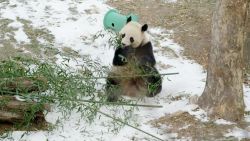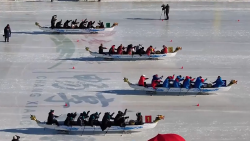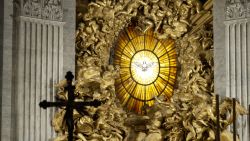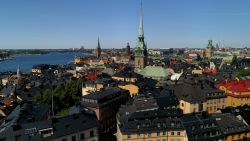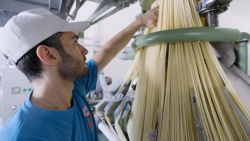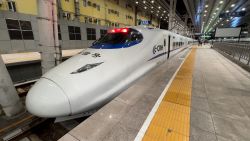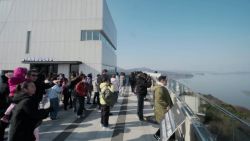Editor’s Note: CNN Travel’s series often carries sponsorship originating from the countries and regions we profile. However, CNN retains full editorial control over all of its reports. Read the policy.
Story highlights
In southern China the traditional lion dance emphasizes posture rather than spectacle
Lion dance master Tang Siu-lun wants to change that
Tang's team recently won the World Lion Dance Championship
The lion dancers leap across two poles at once, aiming for the last and the highest pole.
Ma Chun-kit, the dancer manning the lion head, hops onto the knees of Keith Lim Tiong-heng, the tail.
Then Ma slips forward, hanging upside-down and clinging onto Lim’s waist with his legs only.
“The audience will gasp so loud during that fall,” the lion dancers’ trainer Tang Siu-lun tells CNN during one of their training sessions.
Tang is the third generation in his family to helm Hong Kong Cheung Keung Martial Arts Association, one of the biggest lion dance teams in the city.
Tang’s grandfather founded the club 50 years ago.
“They think an accident was going to happen. Then they’ll cheer when they realize it’s all part of an act.”
Lim yanks Ma up over his shoulders and slowly turns around to face the other side.
Hong Kong: Insider Travel Guide
Lion dancing for a modern audience

At first glance, Tang’s lion dance team looks like it couldn’t be more traditional – offering incense before and after each performance and carrying out consecration ceremonies on the lion heads.
But when it comes to the actual performances, Tang’s team is keen to reinvent the ancient Chinese sport to suit the tastes of a modern audience.
There are various branches of lion dancing. Cheung Keung Martial Arts Association is part of the southern movement that puts more emphasis on the powerful “horse stance” (kung fu posture) than on spectacle.
Tang wants to change that.
“We take stage effects and visual elements into consideration,” says the master, who took over the family dance team more than 20 years ago.
“It’s a show. The person pressing the button behind the scene is as important as the lion dancers.”
This kind of innovation is a unique characteristic of Hong Kong’s lion dancing.
“We’re ahead of other countries in terms of creativity – our new moves always end up being copied by other teams.
“We’ve introduced a lot of new nerve-wracking elements into lion dancing, like walking on a wire that’ll suddenly snap.
“In some of our performances, our high steel poles are machine-operated, so they can rise, fall and turn,” says Tang.
Hong Kong’s best dim sum: How to yum cha like a Cantonese
World Lion Dance Champions

Not everyone approves of the drastic changes.
“The biggest opposition comes from the elder generation of lion dance masters, but [the] audience in this generation is loving it.”
And it’s not just the public who’re singing its praises.
The team recently won the biennial World Lion Dance Championship, held in Hong Kong earlier this year.
The dancers have also been invited to Singapore, Australia and mainland China to train the countries’ lion dance teams.
At this year’s Lunar New Year parade organized by Hong Kong’s tourism board, the lion will be jumping from pole to pole through a fire hoop.
(In the video above, they’ve lit up part of the hoop during a training session).
“We’ll have to control the jump height in order not to burn the lion’s fur,” says Ma, who will be holding onto a head while using his fingers to pull strings to control the lion’s eyelids and ears.
To adapt to the constant new moves, the team practice between three and five nights a week, for a few hours at a time.
“Being the head, you can only trust your partner behind you,” Ma says, referring to Lim.
Lim, who’ll have both hands on Ma’s belt, controls how high Ma jumps and – with split-second timing – where he lands.
“It’s all about building tacit understanding,” Lim says. “The trust is mutual.”
How to be a Hong Kong local: 10 tips
New Year’s celebrations
Hong Kong Chinese New Year Night Parade will start at 8 p.m. on February 8. The parade starts at Hong Kong Cultural Centre Piazza in Tsim Sha Tsui (for ticket holders only). It finishes outside Sheraton Hong Kong Hotel and Towers (open to the public). Find out more on Discover Hong Kong’s website.



